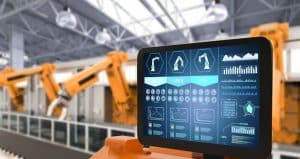If you are looking for What Is CIM(Computer Integrated Manufacturing),then here is a complete step by step guide. Everything that you need to know. What is CIM? is a modern way of making things that uses computers to oversee and coordinate the whole process, from design and planning to production and quality control.
CIM systems often have CAD (computer-aided design) and CAM (computer-aided manufacturing) software, as well as robots and machine tools that are controlled by computers. CIM is meant to improve efficiency, productivity, and quality by putting all of the steps in the manufacturing process into a single, seamless system.
What is CIM? can be done by automating tasks that are done over and over again, cutting down on human mistakes, and making it easier for information to move between departments. The production process is more efficient and cost-effective, and it can adjust to changing market conditions more quickly. CIM is a big part of Industry 4.0 and is used in many industries, such as aerospace, automotive, medical devices, and consumer goods.
Automation In Computer Integrated Manufacturing

What is CIM? CIM systems use technology to control and coordinate each step of the production process. Automation is an important part of CIM systems. Automation in CIM is the use of robots, machine tools, and other automated systems that are run by a computer. The goal of CIM automation is to improve efficiency, productivity, and quality by reducing human mistakes and automating repetitive tasks.
Automation can also make CIM systems more flexible and scalable, so they can respond quickly to changes in the market and increases in output. This can be done by combining automation systems with other CIM components like computer-aided design (CAD) and computer-aided manufacturing (CAM).
What Is CIM Data Management

Data management is an important part of Computer Integrated Manufacturing (CIM) systems because it makes it possible for information to flow smoothly between departments and stages of the manufacturing process. Real-time data is used by CIM systems to improve decision-making and analyze manufacturing operations.
Effective data management in CIM means getting data from machines, sensors, enterprise systems, and other places, storing it, and analyzing it. This information was used to control the manufacturing process and make any changes that were needed to make it better and more efficient.
Data management in CIM also includes data security and regulatory compliance, such as GDPR. CIM systems can By organizing and using data in the right way, CIM systems can give useful insights, improve production planning and forecasting, and reduce waste and downtime.
CIM Quality Control

Computer-integrated production (CIM) systems use technology to keep track of and coordinate all manufacturing processes, including quality control. From design and planning to production and delivery, CIM integrates quality control. CIM systems use real-time data to monitor and alter manufacturing to enhance product quality.
Errors can be found and fixed in real time with automated control tools like sensors and machine learning algorithms. What is CIM? CIM systems can also track the performance of manufacturing processes, find bottlenecks, and improve quality and efficiency. By regulating product quality, CIM systems help businesses meet customer expectations and become more competitive.
What is CIM and its Flexibility and Scalability

CIM, which stands for “Computer Integrated Manufacturing,” is the use of computer systems and technology to connect all of the steps in manufacturing, such as design, production, and logistics. “CIM flexibility” is the ability of CIM systems to adapt to changing production needs and processes, such as being able to handle different products or different amounts.
“CIM scalability” means that CIM systems can handle more work and more production, and that it’s easy to add more production equipment and processes. Together, CIM’s flexibility and scalability make it possible for production facilities to be efficient and successful, able to respond quickly to changes in the market and customer needs.
Implementing CIM

“Computer Integrated Manufacturing” (CIM) is all about using computers to connect different manufacturing processes and systems, such as design, production, and logistics. Several tools and technologies, such as computer-aided design (CAD), computer-aided manufacturing (CAM), and enterprise resource planning (ERP) systems, can be used to do this.
What is CIM, The key to a successful implementation is understanding how manufacturing is done now and finding places where technology can be used to improve efficiency and productivity. A detailed plan, including timelines, money, and resources, should be prepared.
It is also important to include everyone in the process of putting the plan into action, including those who provide staff and equipment. The plan should be put into action in stages, starting with small, manageable projects and then moving on to bigger ones. This will help to reduce manufacturing disruptions and enable a smooth transition to the new system.
What Is CIM Data Analysis And Decision-Making

CIM collects, stores, and analyzes huge amounts of data from production, logistics, and maintenance. This data can help make decisions, boost productivity, and cut costs. CIM data analysis often uses SPC, data mining, and machine learning.
These tools can uncover data patterns and trends to optimize production and prevent problems. CIM also offers real-time production process monitoring, enabling swift decision-making in case of problems. CIM allows producers to make data-driven decisions that save costs, boost efficiency, and improve product quality.
What Is CIM Conclusion
CIM integrates design, production, logistics, and maintenance using computer technology. CIM collects and analyzes huge amounts of data from these processes so that decisions can be made with more knowledge, efficiency and production can be improved, and costs can be cut. What is CIM? CIM gives manufacturers a clear picture of how their products are made.
This lets them make decisions that save money, make production more efficient, and improve the quality of their products. To put CIM into action, you need to know how production works now, make a detailed plan that includes all stakeholders, and put it into action in steps. Today’s fast-paced manufacturing businesses need CIM for efficiency and competitiveness.

